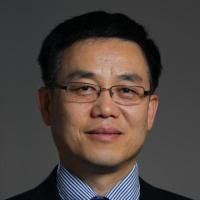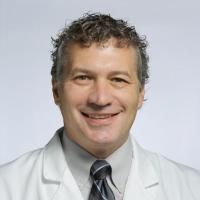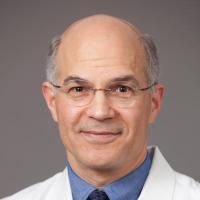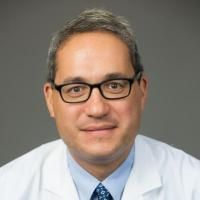Drebrin regulates angiotensin II-induced aortic remodelling.
Date
2018-11
Journal Title
Journal ISSN
Volume Title
Repository Usage Stats
views
downloads
Citation Stats
Abstract
Aims
The actin-binding protein Drebrin is up-regulated in response to arterial injury and reduces smooth muscle cell (SMC) migration and proliferation through its interaction with the actin cytoskeleton. We, therefore, tested the hypothesis that SMC Drebrin inhibits angiotensin II-induced remodelling of the proximal aorta.Methods and results
Angiotensin II was administered via osmotic minipumps at 1000 ng/kg/min continuously for 28 days in SM22-Cre+/Dbnflox/flox (SMC-Dbn-/-) and control mice. Blood pressure responses to angiotensin II were assessed by telemetry. After angiotensin II infusion, we assessed remodelling in the proximal ascending aorta by echocardiography and planimetry of histological cross sections. Although the degree of hypertension was equivalent in SMC-Dbn-/- and control mice, SMC-Dbn-/- mice nonetheless exhibited 60% more proximal aortic medial thickening and two-fold more outward aortic remodelling than control mice in response to angiotensin II. Proximal aortas demonstrated greater cellular proliferation and matrix deposition in SMC-Dbn-/- mice than in control mice, as evidenced by a higher prevalence of proliferating cell nuclear antigen-positive nuclei and higher levels of collagen I. Compared with control mouse aortas, SMC-Dbn-/- aortas demonstrated greater angiotensin II-induced NADPH oxidase activation and inflammation, evidenced by higher levels of Ser-536-phosphorylated NFκB p65 subunits and higher levels of vascular cell adhesion molecule-1, matrix metalloproteinase-9, and adventitial macrophages.Conclusions
We conclude that SMC Drebrin deficiency augments angiotensin II-induced inflammation and adverse aortic remodelling.Type
Department
Description
Provenance
Subjects
Citation
Permalink
Published Version (Please cite this version)
Publication Info
Zhang, Lisheng, Jiao-Hui Wu, Tai-Qin Huang, Igor Nepliouev, Leigh Brian, Zhushan Zhang, Virginia Wertman, Nathan P Rudemiller, et al. (2018). Drebrin regulates angiotensin II-induced aortic remodelling. Cardiovascular research, 114(13). pp. 1806–1815. 10.1093/cvr/cvy151 Retrieved from https://hdl.handle.net/10161/31550.
This is constructed from limited available data and may be imprecise. To cite this article, please review & use the official citation provided by the journal.
Collections
Scholars@Duke

Lisheng Zhang
My research efforts involves studying the pathogenesis of vein graft neointimal hyperplasia and atherosclerosis.
The greatest amount of my time in the past years has been devoted to developing and characterizing our interposition vein graft model in mice. This model allows us to use IVC to carotid artery transplants between congenic mice. These transplants allow us to ask the questions about which gene products contribute to the pathogenesis of vein graft disease. In addition, I have used carotid artery to carotid artery transplants to study the role of TNF receptors in atherosclerosis. For these studies, we have used apolipoprotein E-deficient mice as graft recipients.
By using mouse vein graft model we demonstrate that most of the neointimal cells in vein grafts originate from cellular pools outside of the vein graft at the time of its implantation. The importance of this work relates to our persistent inability to treat vein graft disease in human beings. The second work demonstrates that expression of the tumor necrosis factor receptor-1, even in just in the vein graft cells themselves, contributes to the pathogenesis of vein graft neointimal hyperplasia. In this project, I surgically created chimeric mice to demonstrate molecular mechanisms by which the tumor necrosis factor receptor-1 aggravates neointimal hyperplasia, a process that is believed to lay the foundation for accelerated atherosclerosis in vein grafts.
I have also adapted my vein graft procedure in mice to ask questions about the arterial wall’s role in atherosclerosis. This atherosclerosis model involves making carotid interposition grafts not with veins, but with the carotid artery of congenic mice, and placing them into the carotid artery of spontaneously atherogenic mice that are deficient in apolipoprotein E.
I plan to continue our studies related to the role of inflammatory cytokine receptors in neointimal hyperplasia and atherosclerosis. In addition, I envision extending this work with the surgical models I have created in mice.

Timothy Joseph McMahon
The McMahon Lab at Duke University and Durham VA Medical Center is investigating novel roles of the red blood cell (RBC) in the circulation. The regulated release of the vasodilator SNO (a form of NO, nitric oxide) by RBCs within the respiratory cycle in mammals optimizes nutrient delivery at multiple levels, especially in the lung (gas exchange) and the peripheral microcirculation (O2 transport to tissues). Deficiency of RBC SNO bioactivity (as in human RBCs banked for transfusion), for example, appears to contribute to the serious lung and circulatory problems associated with RBC transfusion in some settings. We have also demonstrated benefit in the use of treatments that exploit RBCs as a vehicle for delivery of SNOs, in both human patients and in model animals.
RBCs also release ATP in response to stimuli including deformation and hypoxia, and the exported ATP also participates in the maintenance of a healthy circulation, according to mechanisms that we are now unraveling.
We use basic and translational approaches to understand the molecular mechanisms by which these RBC-derived signals effect circulatory changes in human health and disease, particularly in the lung. Disease states driving this research include acute and chronic lung diseases such as sepsis (severe infection, such as COVID-19), transfusion-related respiratory problems, sickle cell disease, and pulmonary hypertension of adults and newborns.
Funding: VA and NIH.

Sudha Kaup Shenoy

Francis Joseph Miller
The central goal of my research program is to understand the molecular and cellular mechanisms that contribute to the generation of reactive oxygen species and pathophysiology of vascular disease. I am an internationally recognized expert in NADPH oxidases and detection of reactive oxygen species in blood vessels and vascular cells. As a practicing cardiologist, I strive to integrate research findings across the spectrum of molecular mechanisms to cultured cells to animal models to human disease. A secondary focus utilizes the selectivity of RNA aptamers for therapeutic targeting.

Steven Daniel Crowley
Our laboratory explores the contribution of the immune system and inflammatory mediators to the progression of target organ damage in the setting of cardiovascular disease. We are pursuing several related projects in this field:
(1) The actions of type 1 angiotensin receptors on specific immune cell populations in hypertension, target organ damage, and tissue fibrosis.
(2) Cell-specific actions of inflammatory cytokines in regulating blood pressure and end-organ injury.
(3) Mechanism through which dendritic cells regulate renal sodium reabsorption.
(4) The contributions of Wnt O-acylation to kidney scar formation.

Neil J. Freedman
Our work focuses on atherosclerosis-related signal transduction and the genetic bases of atherosclerosis and vein graft failure, both in vitro and in vivo. We investigate the regulation of receptor protein tyrosine kinases by G protein-coupled receptor kinases (GRKs), and the role of GRKs and β-arrestins in atherosclerosis; molecular mechanisms of atherogenesis associated with the dual Rho-GEF kalirin, the F-actin-binding protein Drebrin, and small nucleolar RNAs (snoRNAs) of the Rpl13a locus. For in vivo modeling of atherosclerosis and neointimal hyperplasia, we use mouse carotid artery bypass grafting with either veins or arteries from gene-deleted or congenic wild type mice, as well as aortic atherosclerosis studies and bone marrow transplantation. To study receptor phosphorylation, signal transduction, and intracellular trafficking, we employ primary smooth muscle cells, endothelial cells, and macrophages derived from knockout mice, as well as cells treated with RNA interference.
Key Words: atherosclerosis, G protein-coupled receptor kinases, arrestins, desensitization, phosphorylation, receptor protein tyrosine kinases, smooth muscle cells, neointimal hyperplasia, Rho-GEF, Drebrin, snoRNAs.

Jonathan Andrew Stiber
Unless otherwise indicated, scholarly articles published by Duke faculty members are made available here with a CC-BY-NC (Creative Commons Attribution Non-Commercial) license, as enabled by the Duke Open Access Policy. If you wish to use the materials in ways not already permitted under CC-BY-NC, please consult the copyright owner. Other materials are made available here through the author’s grant of a non-exclusive license to make their work openly accessible.
